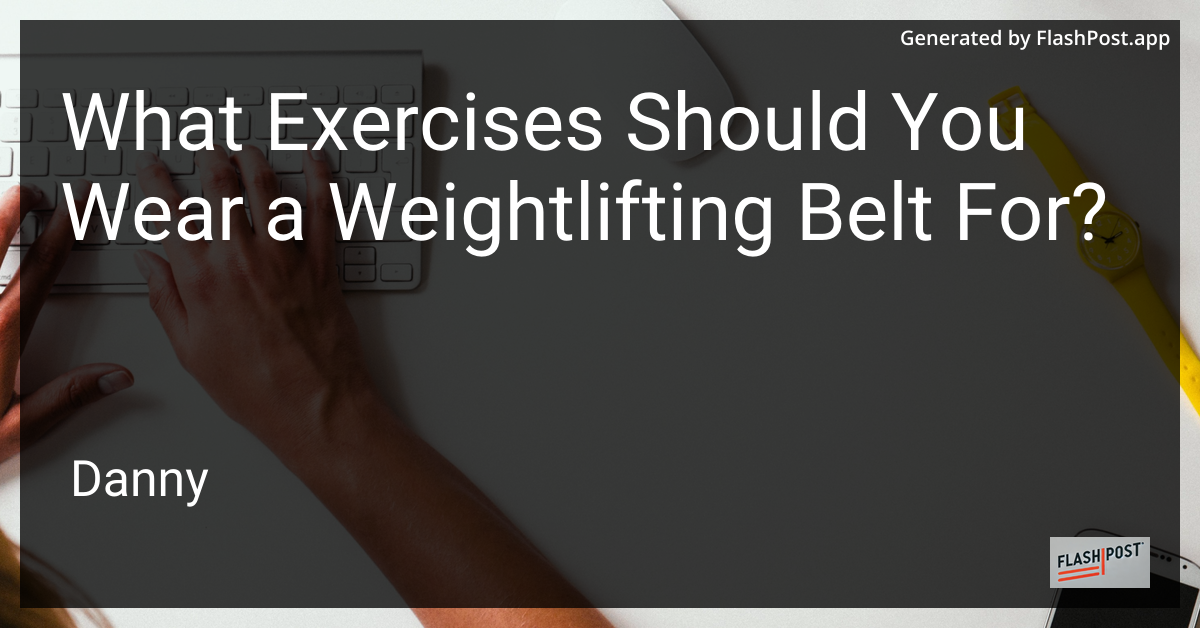
Weightlifting belts have become a staple in many gym-goers' accessories, but understanding when to use a belt can significantly enhance your safety and performance. This guide explores the exercises where wearing a weightlifting belt is most beneficial and how it can help improve your lifts.
The Purpose of a Weightlifting Belt
A weightlifting belt is designed to support your lower back and core during heavy lifting. It provides a surface for your abdominal muscles to push against, increasing intra-abdominal pressure. This added stability is crucial for maintaining form and reducing the risk of injury.
Exercises That Benefit From a Weightlifting Belt
While weightlifting belts can be used in a variety of exercises, they are most beneficial in specific scenarios:
1. Squats
When performing heavy squats, maintaining a strong and stable core is vital. A weightlifting belt can help keep your torso rigid, allowing you to lift more weight while protecting your spine.
2. Deadlifts
Deadlifts put immense pressure on your lower back, especially as you approach your one-rep max. A belt provides that extra support needed to keep your spine safe and allows for more powerful lifts.
3. Overhead Press
In overhead movements, such as the overhead press, a weightlifting belt can offer support for your lower back, helping to prevent hyperextension and maintain a solid posture.
4. Clean and Jerk
The explosive nature of a clean and jerk demands a robust core engagement. A weightlifting belt can help stabilize your midsection during these dynamic movements, improving balance and form.
5. Snatch
Similar to the clean and jerk, the snatch requires a strong core and excellent balance. Wearing a belt can support your lower back and aid in maintaining technique during this complex lift.
When Not to Wear a Weightlifting Belt
While belts are beneficial for heavy lifts, they are not necessary for all exercises. Avoid using a belt for:
- Lighter weight exercises where full core engagement is paramount to developing core strength.
- Isolation exercises as they generally do not require the level of core stabilization that compound lifts do.
Conclusion
Weightlifting belts are a helpful tool in your lifting arsenal. When utilized correctly during specific heavy, compound lifts like the squat, deadlift, and overhead press, they can enhance performance by providing exceptional core support and reducing injury risk. Remember to use belts judiciously to ensure you also build natural core strength for other exercises.
For more insights on weightlifting equipment, you might be interested in exploring the best price neoprene weights 2025. Also, if you're diving into managing weight roles in computing, check out saved weights pytorch and restore weights for more information.
By understanding when to leverage supportive equipment like a weightlifting belt, you can maximize your workout potential while safeguarding your body.